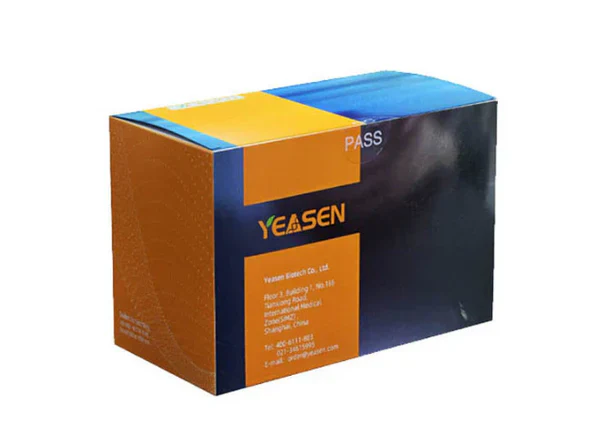Description
Phalloidin is a cyclic heptapeptide toxin derived from the death cap mushroom (Amanita phalloides). It binds to filamentous actin (F-actin) with high affinity (Kd = 20 nM) and does not bind to globular actin (G-actin). It is commonly used to label F-actin in tissue sections, cell cultures, or cell-free systems for qualitative and quantitative analysis. Phalloidin derivatives also bind to actin filaments from both animal and plant sources, including muscle and non-muscle cells, at a stoichiometric ratio of approximately one phalloidin molecule per actin subunit. Non-specific binding is negligible, providing clear distinction between stained and unstained regions. Therefore, phalloidin derivatives are particularly suitable as a substitute for actin antibodies in related research. Additionally, phalloidin derivatives are small, with a diameter of approximately 12-15 Å and a molecular weight of less than 2000 Daltons. Many physiological properties of actin are maintained, such as the ability to interact with actin-binding proteins like myosin, tropomyosin, and DNase I. Phalloidin-labeled filaments can still penetrate solid myosin matrices, and glycerol-extracted muscle fibers can contract after labeling.
Phalloidin binding inhibits the depolymerization of filamentous actin (microfilaments), stabilizing their structure and disrupting the dynamic equilibrium of polymerization and depolymerization. This property reduces the critical concentration (CC) for actin polymerization to less than 1 µg/mL, making it a potent polymerization promoter. Additionally, phalloidin inhibits the ATP hydrolysis activity of F-actin.
This product is iFluor™ 488-labeled phalloidin, which emits bright, photostable green fluorescence. It has strong specificity and high contrast in staining, offering better staining effects than actin antibodies. It is suitable for qualitative and quantitative detection of F-actin. Phalloidin-iFluor™ 488 Conjugate staining is fully compatible with other fluorescent stains used in cell analysis, including fluorescent proteins, Qdot® nanocrystals, and other iFluor™ conjugates (including iFluor™-conjugated secondary antibodies). Moreover, F-actin bound by this product maintains many biological properties of actin itself. The binding of this product is non-species-specific and has a wide range of applications.
This product is provided at a concentration of 1 mg/mL.
Features
Binds selectively to filamentous actin (F-actin).
Phalloidin is not species-specific and exhibits virtually no non-specific staining, providing extremely clear contrast between stained and unstained regions.
It is highly compatible and does not affect the activity of actin.
Applications
The tight and selective binding to F-actin reveals the distribution of microfilament cytoskeleton within the cell.
Specifications
|
Molecular Weight |
~1900 |
|
Excitation/Emission |
493/517 nm |
|
Solubility |
Soluble in DMSO |
|
Structure |

|
Components
|
Components No. |
Name |
40736ES75 |
|
40736 |
Phalloidin-iFluor™ 488 Conjugate |
300 T |
Shipping and Storage
The product is shipped with ice pack. Can be stored at -15°C ~-25°C in a dark, dry environment for up to one year.
Documents:
Safety Data Sheet
Manuals
Citations & References:
[1] Wang C, Tu J, Zhang S, et al. Different regions of synaptic vesicle membrane regulate VAMP2 conformation for the SNARE assembly. Nat Commun. 2020;11(1):1531. Published 2020 Mar 24. doi:10.1038/s41467-020-15270-4(IF:12.121)
[2] Chao F, Song Z, Wang S, et al. Novel circular RNA circSOBP governs amoeboid migration through the regulation of the miR-141-3p/MYPT1/p-MLC2 axis in prostate cancer. Clin Transl Med. 2021;11(3):e360. doi:10.1002/ctm2.360(IF:11.492)
[3] Cao H, Zhou Q, Liu C, et al. Substrate stiffness regulates differentiation of induced pluripotent stem cells into heart valve endothelial cells. Acta Biomater. 2022;143:115-126. doi:10.1016/j.actbio.2022.02.032(IF:8.947)
[4] Xie H, Zhang C, Liu D, et al. Erythropoietin protects the inner blood-retinal barrier by inhibiting microglia phagocytosis via Src/Akt/cofilin signalling in experimental diabetic retinopathy. Diabetologia. 2021;64(1):211-225. doi:10.1007/s00125-020-05299-x(IF:7.518)
[5] Wang L, Lv H, Liu L, et al. Electrospun nanofiber-reinforced three-dimensional chitosan matrices: Architectural, mechanical and biological properties [published correction appears in J Colloid Interface Sci. 2022 Aug 15;620:486]. J Colloid Interface Sci. 2020;565:416-425. doi:10.1016/j.jcis.2020.01.016(IF:7.489)
[6] Liu J, Li T, Zhang H, et al. Electrospun strong, bioactive, and bioabsorbable silk fibroin/poly (L-lactic-acid) nanoyarns for constructing advanced nanotextile tissue scaffolds. Mater Today Bio. 2022;14:100243. Published 2022 Mar 24. doi:10.1016/j.mtbio.2022.100243(IF:7.348)
[7] Qiu Y, Xu K, Xie L, Chen S, Sun Y. The Reduction in Microtubule Arrays Caused by the Dysplasia of the Non-Centrosomal Microtubule-Organizing Center Leads to a Malformed Organ of Corti in the Cx26-Null Mouse. Biomedicines. 2022;10(6):1364. Published 2022 Jun 9. doi:10.3390/biomedicines10061364(IF:6.081)
[8] Liu XZ, Jin Y, Chen S, et al. F-Actin Dysplasia Involved in Organ of Corti Deformity in Gjb2 Knockdown Mouse Model. Front Mol Neurosci. 2022;14:808553. Published 2022 Mar 7. doi:10.3389/fnmol.2021.808553(IF:5.639)
[9] Chang T, Yin H, Yu X, et al. 3D PCL/collagen nanofibrous medical dressing for one-time treatment of diabetic foot ulcers. Colloids Surf B Biointerfaces. 2022;214:112480. doi:10.1016/j.colsurfb.2022.112480(IF:5.268)
[10] Sun M, Chen S, Ling P, Ma J, Wu S. Electrospun Methacrylated Gelatin/Poly(L-Lactic Acid) Nanofibrous Hydrogel Scaffolds for Potential Wound Dressing Application. Nanomaterials (Basel). 2021;12(1):6. Published 2021 Dec 21. doi:10.3390/nano12010006(IF:5.076)
Payment & Security
Your payment information is processed securely. We do not store credit card details nor have access to your credit card information.
Inquiry
You may also like
FAQ
The product is for research purposes only and is not intended for therapeutic or diagnostic use in humans or animals. Products and content are protected by patents, trademarks, and copyrights owned by Yeasen Biotechnology. Trademark symbols indicate the country of origin, not necessarily registration in all regions.
Certain applications may require additional third-party intellectual property rights.
Yeasen is dedicated to ethical science, believing our research should address critical questions while ensuring safety and ethical standards.

